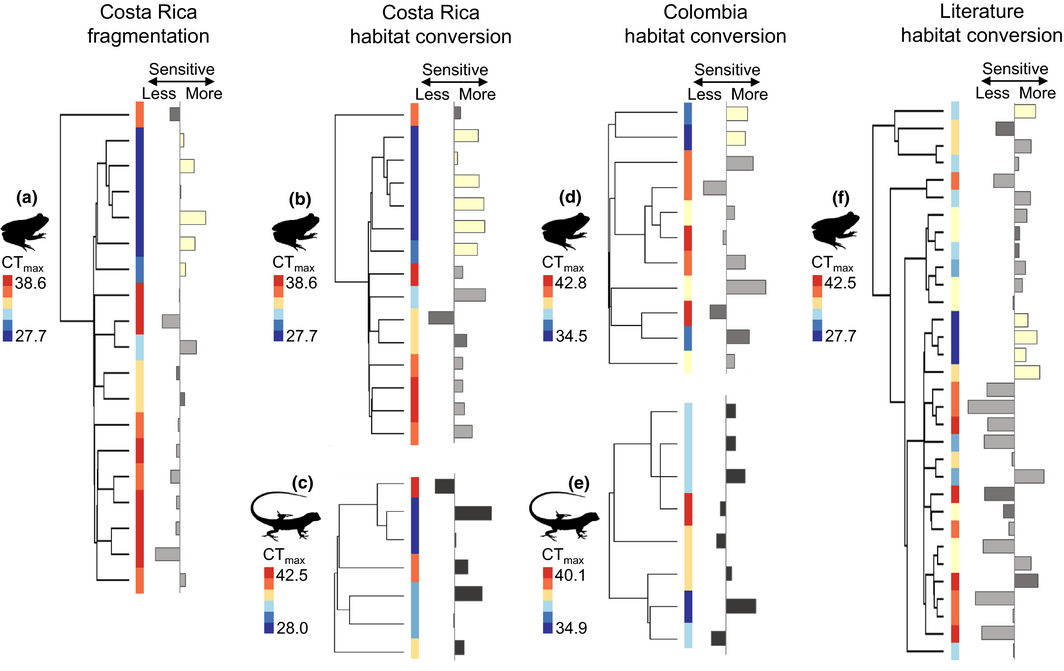|
Our lab contributed to a publication by collaborator Justin Nowakowski published this week (early view) in Ecology Letters. The study explored the hypothesis that ecophysiological traits of amphibians and reptiles, specifically tolerance to heat (i.e., Critical Thermal Maximum of righting reflex), variation in body temperatures experienced by animals in their habitats, and evaporative water loss were associated with sensitivity to habitat modification. Field data from focal studies in Costa Rica and Colombia were supplemented by a meta-analysis drawing from multiple studies and continents. The results of the analyses were generally consistent across locations and communities, and showed that tolerance to heat can explain roughly 40% and up to 2/3 of variation in sensitivity to habitat modification. For example when tropical forests are logged, the loss of canopy cover dramatically increases maximum daily temperatures. Species of amphibians and reptiles that are unable to tolerate the new high temperatures are thus locally extirpated. Because several ecophysiological traits are conserved within families, an association between these traits and sensitivity to habitat modification can help predict impacts of human disturbance on herpetological biodiversity, and develop mitigation strategies to reduce such impacts.
0 Comments
Leave a Reply. |
Archives
June 2024
CATENAZZI LABNews from the lab Categories |

 RSS Feed
RSS Feed